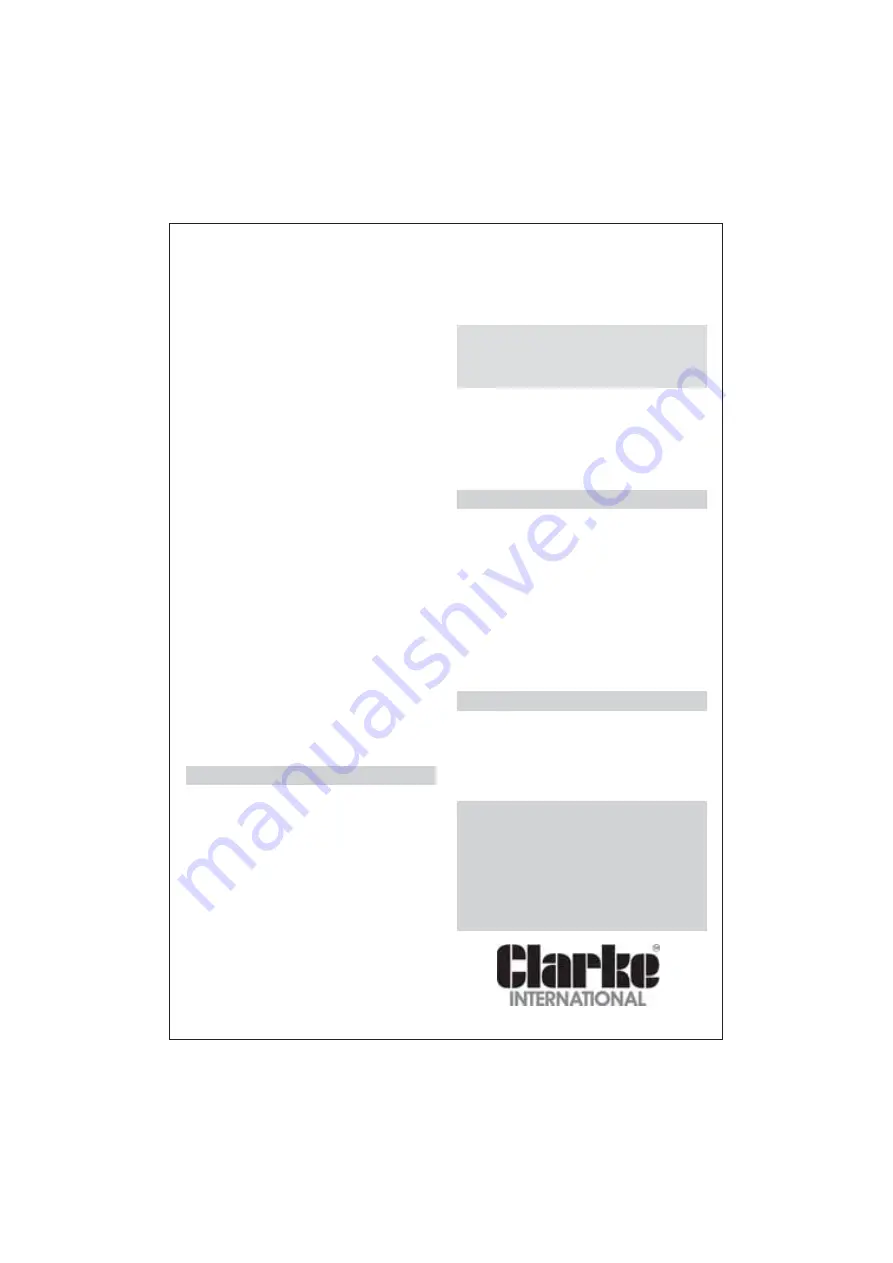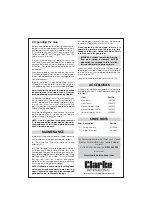
2. Operating the Gun
The gun is operated by first, placing it directly over
the point to be stapled, and holding down firmly
with the palm of one hand, on the pressure screw
(C) whilst pressing down firmly and progressively
on the handle (B), until the gun ‘fires’, and the
staple or nail is inserted.
To assist in positioning the staple correctly, the
front face of the gun has a notch at its base, to
indicate the place at which stapling will occur.
The notch should be centered over the point to
be stapled.
If you are using nails, then the edge of the notch
is similarly placed over the point to be nailed,
(which side, depends upon which carriage rail the
nails are located).
The pressure screw (C) may be adjusted so that it
will apply the appropriate force to the staple, or
nail, depending upon the material being stapled.
Note: The softer the material, the less force will be
required to drive in the staple or nail. Excessive
force may damage the material being stapled.
It is advised therefore, that where necessary, you
should slacken off the pressure screw and test its
action, progressively increasing the pressure by
turning the screw, until you determine the
pressure required to correctly staple the material
without it being damaged.
If you are stapling fabric, take care not to use too
great a pressure, as this may cause the staple to
go right through, tearing the fabric.
NOTE: A hole is provided in the body, shown at
‘D’, through which the staples may be viewed. By
keeping an eye on this,it is possible to determine
when a reload is required.
MAINTENANCE
I
n the event the gun jams, and/or staples become
enmeshed within the gun, proceed as follows:
(a)
Remove the Pressure rod and spring
assembly (G)
(b)
The Carriage (E) is held in place by two lugs
on its fron end, which locate into two slots in the
front edge of the gun. Holding the gun firmly, pull
back the carriage against spring pressure, using
the finger grips (F), on its sides. This will dislocate
the lugs from their slots. Apply a downwards
pressure, on the carriage and release it, allowing
it to swing on its hinge as illustrated.
NOTE: If difficulty is encountered in pulling back
on the lugs, it may be necessary to use a tool (e.g.
plyers) to grasp the open end of the carriage and
pull back in order to dislocate the lugs.
Any damaged material may now be carefully
removed, using a pair of pliers or similar.
When replacing the carriage, ensure it is
completely forward, and the lugs are fully
engaged in their slots. Failure to comply with this
rule, may cause the gun to jam.
IMPORTANT: Always remove the Pressure
Rod and Spring Assembly BEFORE
dislocating the carriage. Failure to follow
this rule could result in personal injury.
When you have finished using the gun, always
remove any unused staples or nails, and relieve
the pressure on the spring by unscrewing the
pressure screw (C).
Secure the handle with the safety catch (A).
Hemnall Street, Epping, Essex CM16 4LG
ACCESSORIES
A Range of replacement staples and nails are
available from your CLARKE dealer, including the
following:
Item
Part No.
Nails 8mm
1800205
Nails 14mm
1800210
Round Staples 10mm
1800230
Round Staples 14mm
1800235
Square Staples 14mm
1800245
SPARE PARTS
Item Description
Part No.
G
Rod Assembly
KL18004
C
Adjuster Screw
KL18002
For Sales and Service, contact your Clarke
dealer. For details of your nearest dealer
contact:
CLARKE International on
01992 565300
or e-mail:
Sales@clarkeinternational.com


